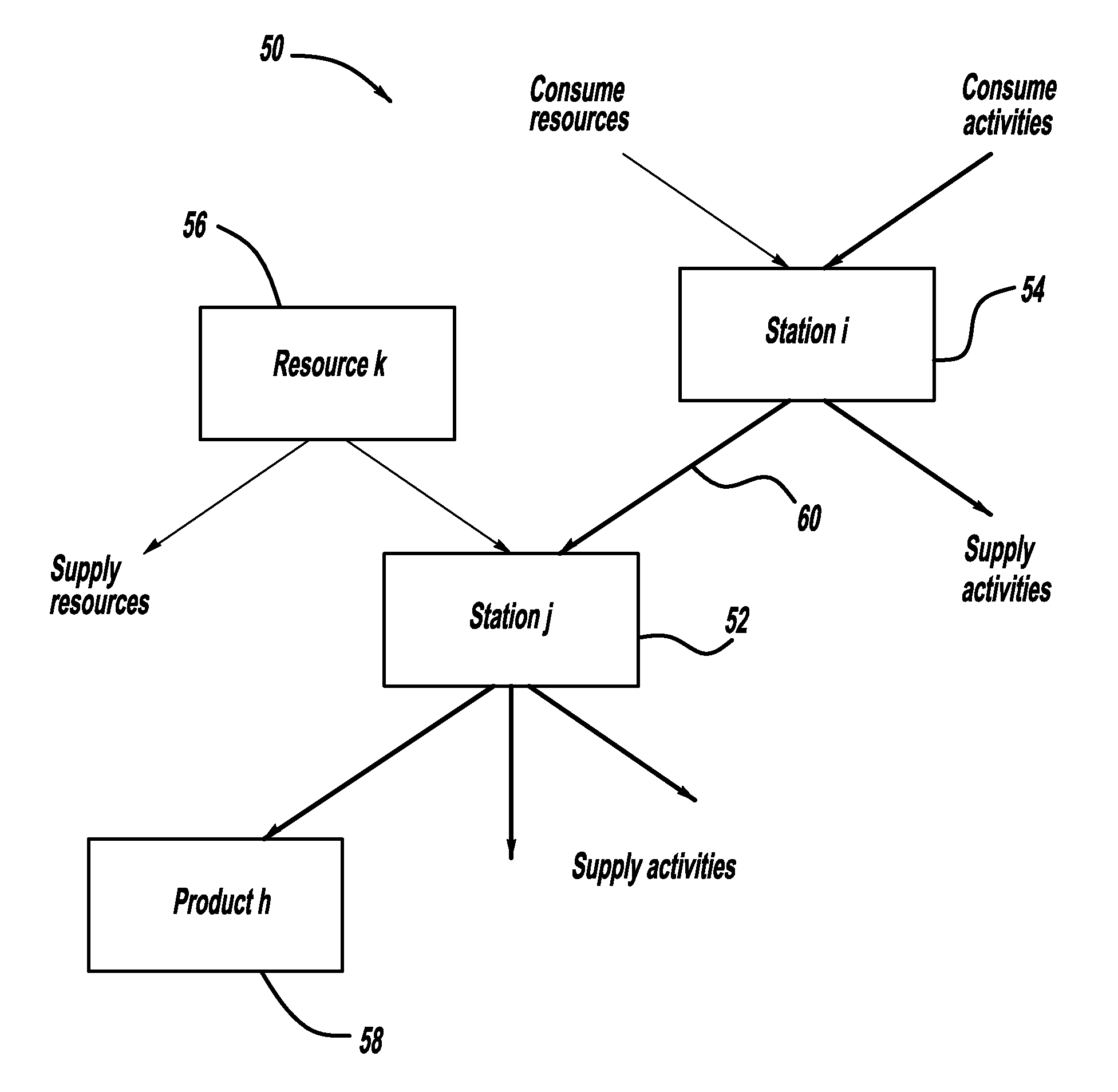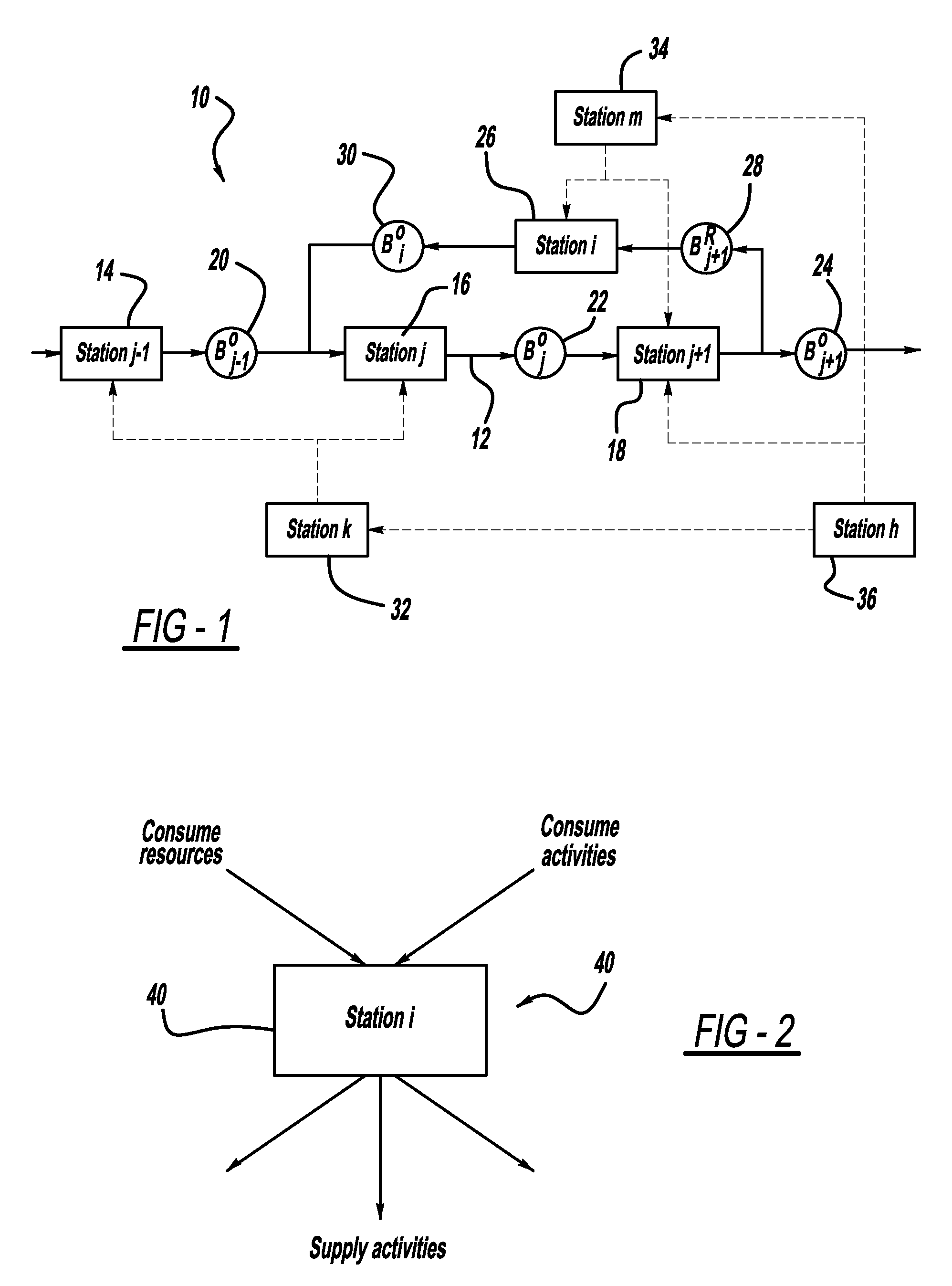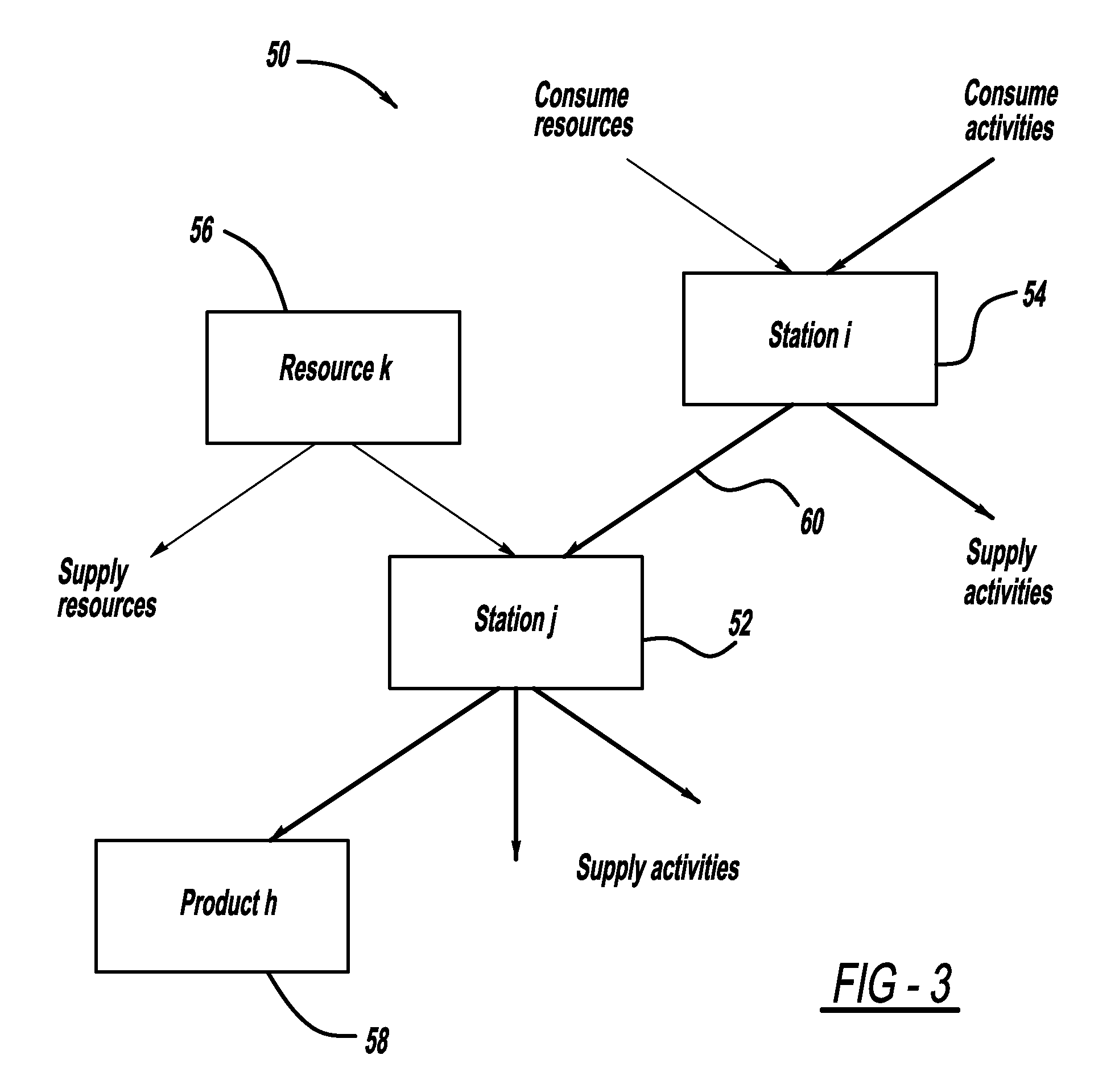Model-based real-time cost allocation and cost flow
a real-time cost allocation and cost flow technology, applied in the field of model-based real-time cost allocation and cost flow process of manufacturing facilities, can solve the problems of limiting the capabilities of the design purpose, requiring less accuracy, and different costing systems often applied in isolation, so as to achieve accurate and timely financial feedback
- Summary
- Abstract
- Description
- Claims
- Application Information
AI Technical Summary
Benefits of technology
Problems solved by technology
Method used
Image
Examples
Embodiment Construction
[0038]The following discussion of the embodiments of the invention directed to a system and method for providing cost flow operations in a plant is merely exemplary in nature, and is in no way intended to limit the invention or its applications or uses.
[0039]In general, plant floor activities can be classified into two categories, namely production activities and supporting activities. Production activities are those activities that directly contribute to the completion of the product. Typical examples of production activities in an automotive manufacturing plant include installation of an air bag, welding the front door panel of the vehicle, etc. Supporting activities do not directly contribute to the completion of the product, but are essential for normal operation of the production process. Maintenance and material handling are two major supporting activities on a plant floor. It is inevitable that subjectiveness will be introduced into the process of identifying the activities a...
PUM
 Login to View More
Login to View More Abstract
Description
Claims
Application Information
 Login to View More
Login to View More - R&D
- Intellectual Property
- Life Sciences
- Materials
- Tech Scout
- Unparalleled Data Quality
- Higher Quality Content
- 60% Fewer Hallucinations
Browse by: Latest US Patents, China's latest patents, Technical Efficacy Thesaurus, Application Domain, Technology Topic, Popular Technical Reports.
© 2025 PatSnap. All rights reserved.Legal|Privacy policy|Modern Slavery Act Transparency Statement|Sitemap|About US| Contact US: help@patsnap.com



